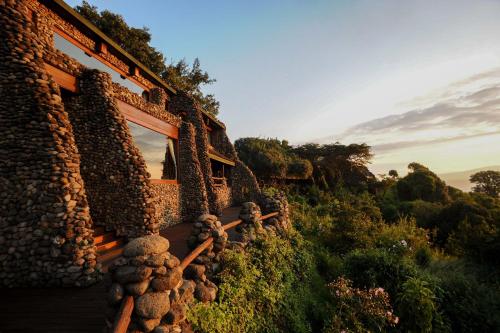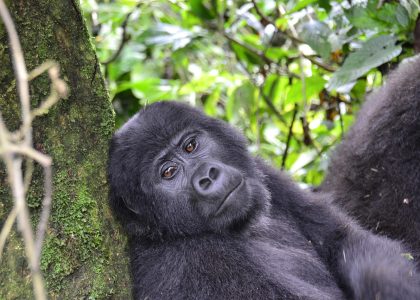Welcome back to the second of our Wazimba Travel Tanzania series, where we continue our exploration of East Africa’s premier safari destination. As safari specialists with years of experience in Tanzania, we understand that timing can transform your travel experience. Tanzania’s rhythms—driven by rainfall patterns, wildlife migrations, and visitor fluctuations—create distinct advantages throughout the year. In this comprehensive guide, we’ll help you navigate these seasonal nuances to plan your perfect Tanzanian adventure.
Decoding Tanzania’s Seasons
Tanzania’s weather patterns create several distinct travel seasons, each offering unique advantages for different types of experiences:
Dry Season (June to October)
The most popular time for Tanzania safaris delivers reliably excellent wildlife viewing:
Wildlife Concentration: Animals gather around diminishing water sources, making them easier to find and observe. This is particularly dramatic in parks like Tarangire, where elephant herds of 300+ individuals congregate along the riverbed.
Visibility Advantages: Thinning vegetation improves sightlines for wildlife photography and spotting elusive predators like leopards. The landscape’s golden hues create stunning photographic backgrounds, especially during the magic light of early morning and late afternoon.
Great Migration Highlights: The Serengeti’s northern reaches and Kenya’s Maasai Mara host dramatic river crossings from July through September, as wildebeest herds navigate crocodile-infested waters.
Pleasant Conditions: Low humidity, mild temperatures (especially in highland areas), minimal rain, and fewer mosquitoes create comfortable safari conditions.
Peak Season Considerations: Higher visitor numbers (especially July-August) and premium pricing reflect the season’s popularity. Key locations require advance booking—sometimes 12+ months for premier accommodations.
Short Rains (November to mid-December)
This transitional period offers excellent value and unique advantages:
“Green Season” Beauty: Brief afternoon showers transform landscapes into lush green panoramas—fantastic for photographers seeking vibrant scenery.
Wildlife Birthing: Many plains animals time their births for this season, creating abundant opportunities to observe newborns and the dramatic predator interactions that follow.
Migration Movement: Wildebeest herds typically begin their southward journey toward the southern Serengeti plains—an impressive movement without the peak-season crowds.
Value Proposition: Significant savings on accommodations and fewer visitors create an excellent balance of experience and value.
Practical Considerations: Afternoon showers rarely disrupt safari activities, but occasional muddy roads might require route adjustments. The increased humidity attracts more insects in some areas.
Green Season (January to March)
Tanzania’s lush season creates extraordinary conditions for specific experiences:
Southern Serengeti Spectacle: The Great Migration concentrates in the nutrient-rich southern plains for calving season (January-February), when approximately 8,000 wildebeest are born daily. This dramatic spectacle attracts intense predator activity.
Birdwatcher’s Paradise: Migratory birds from Europe and North Africa join resident species, bringing Tanzania’s bird count to over 1,000 species. The colorful breeding plumage and active nesting behaviors delight birdwatchers.
Photographic Advantages: Dramatic skies, wildflowers, and vibrant landscapes create memorable photographic conditions, while afternoon thunderstorms deliver spectacular lighting opportunities.
Value Benefits: Outside the February calving peak, this period offers Tanzania’s best value, with significantly reduced rates and minimal crowds.
Weather Considerations: While most days feature sunshine, short afternoon downpours can occur. The Central Safari Circuit remains highly accessible, though some remote southern and western parks might have limited access.
Long Rains (Late March to May)
Tanzania’s genuine off-season presents distinct considerations:
Maximum Affordability: The most significant discounts occur during this period, with some lodges offering up to 40% reductions and minimal crowds at major attractions.
Landscape Transformation: The abundant rainfall creates spectacular waterfalls, filled wetlands, and lush vegetation—conditions photographers and naturalists particularly appreciate.
Challenging Conditions: Heavy rainfall can make some roads impassable, especially in southern and western Tanzania. Some smaller camps close during this period for refurbishment.
Alternative Destinations: While parts of the safari circuit experience limitations, this season creates ideal conditions for:
- Kilimanjaro climbing (April-May often features clearer summit views)
- Cultural experiences less dependent on weather conditions
- Urban explorations of Dar es Salaam and Stone Town, Zanzibar
Regional Seasonal Variations
Tanzania’s diverse geography creates significant regional weather variations worth considering:
Northern Safari Circuit (Serengeti, Ngorongoro, Tarangire)
Year-Round Appeal: The northern parks offer excellent game viewing throughout the year, with distinct seasonal advantages.
Specialized Timing:
- January-February: Witness the Great Migration’s calving season in southern Serengeti
- April-May: Dramatic landscapes and reduced crowds, though some roads become challenging
- June-July: Migration in the western and northern Serengeti corridors
- August-September: River crossings in northern Serengeti
- October-December: Return migration through central Serengeti
Southern Circuit (Nyerere/Selous, Ruaha)
Prime Season: June to November offers the best wildlife concentration and accessibility.
Challenging Period: Some southern camps close during the heavy rains from March to May when roads become impassable.
Unique Opportunity: Early green season (December-January) creates a sweet spot of good access, lush scenery, and excellent wildlife viewing without crowds.
Western Safari Areas (Mahale, Katavi)
Chimpanzee Tracking: July to October provides optimal conditions in Mahale Mountains, when chimps descend to lower elevations and trails remain accessible.
Katavi National Park: This remote gem is best visited during the dry season (June-October) when massive wildlife congregations form around remaining water sources.
Coastal Tanzania and Islands
Ideal Conditions: June to October and December to March offer sunny days and moderate temperatures.
Challenging Period: The long rains (April-May) bring heavier precipitation to coastal areas, with some smaller beach properties closing.
Marine Highlights:
- November to March: Prime whale shark season around Mafia Island
- September to March: Ideal diving conditions with excellent visibility
- January to March: Peak kite surfing season in Zanzibar
How Long to Stay: Crafting the Perfect Itinerary
Tanzania rewards those who can dedicate sufficient time to experience its diversity. Here are our recommendations based on your available time:
1-Week Safari Focus (7 Days)
For time-constrained travelers, we recommend concentrating on a single region:
Northern Circuit Classic:
- Day 1: Arrive Kilimanjaro Airport, overnight Arusha
- Days 2-3: Tarangire National Park (elephant herds, baobab landscapes)
- Day 4: Ngorongoro Crater (wildlife sanctuary with exceptional predator density)
- Days 5-6: Central/Northern Serengeti (based on migration timing)
- Day 7: Return flight from Serengeti to Arusha/Kilimanjaro
Southern Safari Immersion:
- Day 1: Arrive Dar es Salaam, overnight
- Days 2-5: Nyerere National Park/Selous (boat safaris, walking experiences, game drives)
- Day 6: Fly to Dar es Salaam, city exploration
- Day 7: Departure
10-12 Day Balanced Experience
With 10-12 days, you can combine two distinct Tanzanian environments:
Safari & Beach Classic:
- Days 1-6: Northern Safari Circuit highlights
- Days 7-11: Zanzibar beaches and cultural experiences
- Day 12: Return via Zanzibar or Dar es Salaam
Wildlife Diversity Focus:
- Days 1-6: Northern Safari Circuit
- Days 7-11: Southern Safari experience (Nyerere/Ruaha)
- Day 12: Return via Dar es Salaam
Ultimate Tanzania (14-21 Days)
With two or more weeks, you can experience Tanzania’s remarkable diversity:
Grand Tanzania (14 Days):
- Days 1-6: Northern Safari Circuit
- Days 7-9: Fly to western Tanzania for chimpanzee tracking in Mahale Mountains
- Days 10-14: Zanzibar cultural and beach experiences
Complete Tanzania (21 Days):
- Days 1-7: Comprehensive Northern Circuit including walking safaris
- Days 8-9: Kilimanjaro foothills cultural experiences
- Days 10-14: Southern Safari immersion (Ruaha and Nyerere)
- Days 15-20: Zanzibar, Pemba, or Mafia Island exploration
- Day 21: Departure
Budget Considerations Across Seasons
Tanzania offers experiences across budget categories, with significant seasonal variations:
Luxury Experience ($800-1,500+ per person per day)
What to Expect:
- Exclusive luxury camps and lodges with premium locations
- Private vehicles and top-tier guides
- Scenic air transfers between destinations
- All-inclusive amenities including premium beverages
- Special experiences (private dinners, exclusive access areas)
Seasonal Variation: Even luxury properties offer 10-25% green season discounts, with significant added value such as free nights or complimentary activities.
Mid-Range Experience ($400-800 per person per day)
What to Expect:
- Comfortable permanent camps and lodges
- Shared game drive vehicles with guaranteed window seats
- Some air transfers, combined with road transfers
- Most meals and standard beverages included
- Quality guiding and standard activities
Seasonal Opportunity: Green season rates can reduce this category by 20-35%, making mid-range experiences particularly good value from November-December and January-March.
Budget-Conscious Experience ($200-400 per person per day)
What to Expect:
- Simple but comfortable lodges and tented camps
- Shared safari vehicles and longer road transfers
- Standard meal plans without premium options
- Basic but authentic safari experience
Seasonal Strategy: Combining green season (30-40% discounts) with budget properties creates Tanzania’s most affordable authentic safari experience.
Practical Planning Essentials
Entry Requirements and Visas
Visa Process: Most visitors require a tourist visa, available through three convenient options:
- E-visa application online before travel (recommended)
- Visa on arrival at major entry points ($50-100 depending on nationality)
- Embassy application in your home country
Required Documents:
- Passport valid for six months beyond your visit
- Return/onward tickets
- Yellow fever certification (if arriving from endemic countries)
Health Preparations
Essential Vaccinations:
- Yellow fever (required if arriving from endemic countries)
- Routine vaccinations (MMR, tetanus, etc.)
- Consider typhoid and hepatitis A
Malaria Prevention:
- Consult your travel health provider about appropriate prophylaxis
- Highest risk during rainy seasons and in lowland areas
- Lower risk in highland areas above 1,800 meters
Medical Recommendations:
- Comprehensive travel insurance with evacuation coverage
- Basic first aid supplies for minor issues
- Prescription medications in original containers with doctor’s letter
Packing Essentials by Season
Dry Season (June-October):
- Lightweight, neutral-colored clothing (avoid bright colors and blue/black which attract tsetse flies)
- Warm layers for cool mornings/evenings (especially in crater highlands)
- Sun protection (hat, sunglasses, high SPF sunscreen)
- Binoculars and camera equipment with extra batteries/storage
- Insect repellent (DEET-based)
Green Season Additions (November-May):
- Quick-dry clothing
- Lightweight rain jacket/poncho
- Waterproof bag for camera equipment
- Extra insect repellent
- Light long-sleeved shirts and pants for added insect protection
Coastal and Island Additions:
- Modest clothing for visiting communities (shoulders/knees covered)
- Reef-safe sunscreen for marine environments
- Lightweight, breathable fabrics for humid conditions
- Sandals and sturdy water shoes
Wazimba Travel Seasonal Recommendations
As local experts with intimate knowledge of Tanzania’s seasonal patterns, here are our specific recommendations for different travel priorities:
For Wildlife Enthusiasts
- First-Time Safari: June to October offers almost guaranteed excellent wildlife viewing
- Migration Focused: February (southern Serengeti calving) or August-September (northern river crossings)
- Predator Action: January-March when many plains animals give birth
- Rare Species: Dry season (June-October) in Ruaha or Katavi for unusual species concentration
For Photographers
- Dramatic Landscapes: November-December when storm clouds build against clear skies
- Lush Scenery: January-March when plains are green and dotted with wildflowers
- Large Herds: February in southern Serengeti or September-October in northern parks
- Bird Photography: Green season (January-April) when migratory species display breeding plumage
For Budget-Conscious Travelers
- Maximum Value: April-May offers the lowest rates (with some compromise on ease of travel)
- Balanced Experience: November-December provides excellent value with minimal compromise
- Northern Circuit Value: March-April creates unique opportunities to visit premier destinations with minimal crowds
For Families
- School Holidays: July-August and December offer dry-season conditions during common vacation periods
- Malaria Minimizing: September-October features dry conditions when mosquito populations are diminished
- Comfortable Conditions: June-September provides moderate temperatures ideal for multi-generational groups
Ready for Your Seasonal Tanzanian Adventure?
Understanding Tanzania’s seasonal rhythms allows you to match your visit to your specific travel priorities, whether focused on particular wildlife experiences, photography conditions, budget considerations, or comfort preferences. Every season in Tanzania offers unique advantages—the key is aligning them with your personal travel goals.
In our next installment, we’ll explore Tanzania’s legendary national parks and reserves, from the famous northern circuit to the less-visited southern and western wilderness areas. Stay tuned to discover the distinctive wildlife experiences these protected areas offer!
Have questions about the best timing for your Tanzanian adventure? Ready to start planning a perfectly-timed safari? Contact the Wazimba Travel team for personalized consultation and expert seasonal guidance tailored to your specific interests and preferences.






